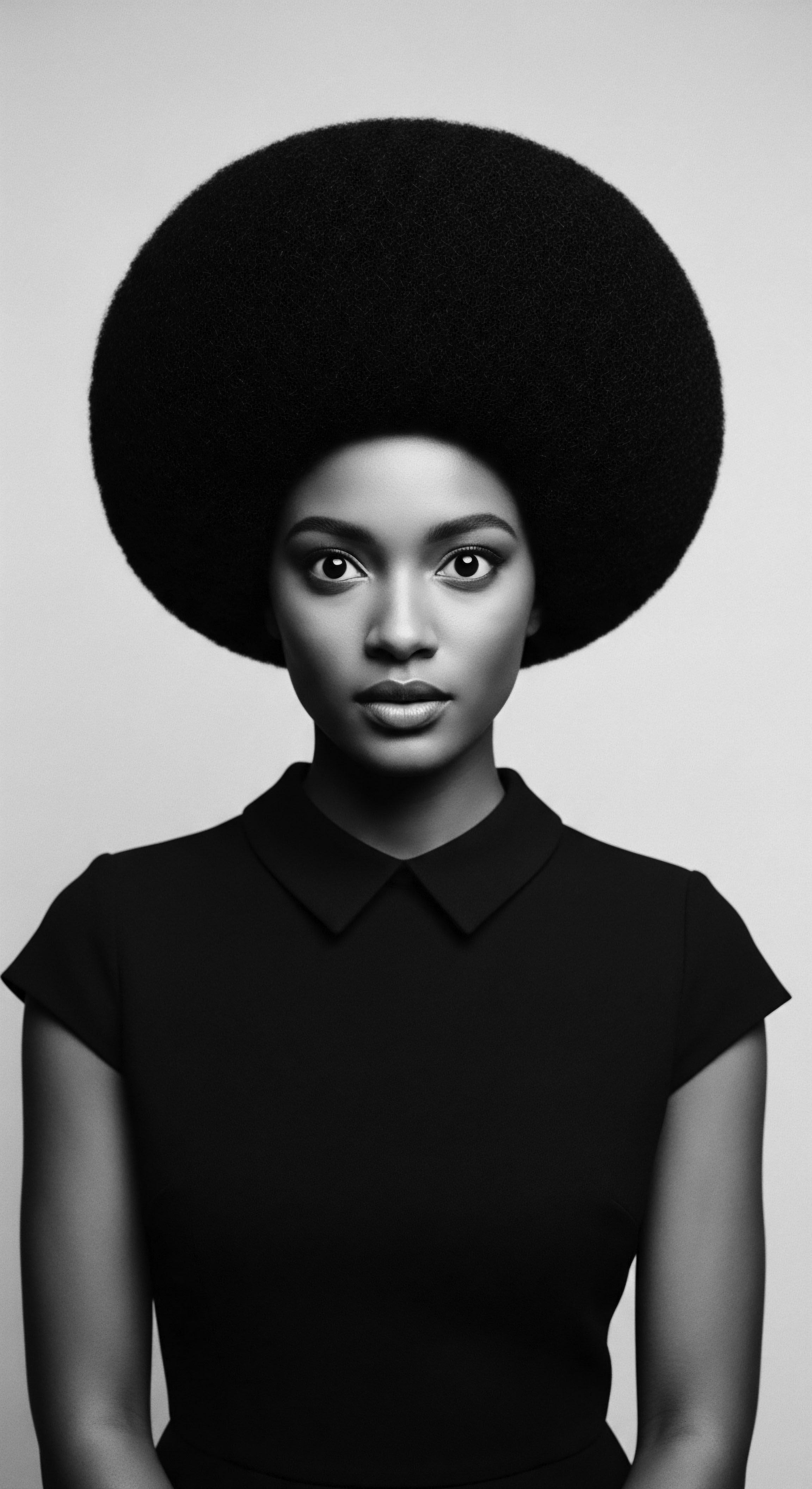
Fundamentals
The concept of ‘Hair Politics’ stands as a profound articulation within Roothea’s living library, a recognition that the strands gracing our crowns are never merely biological filaments. Instead, they represent potent symbols, living archives of history, identity, and societal constructs. For those new to the intricate world of textured hair care, particularly concerning Black and mixed-race hair, understanding this term begins with acknowledging its foundational connection to ancestral narratives and cultural significance. It is a lens through which we comprehend the broader societal dynamics, power structures, and historical currents that have shaped the perception, treatment, and self-perception of textured hair across generations.
At its most elemental, the meaning of Hair Politics, from the earliest historical or cultural contexts, centers on the ways hair has served as a silent, yet powerful, language. Before the advent of colonial influences, in countless African societies, hair was an undeniable marker of status, lineage, spiritual connection, and communal belonging. Its configuration could convey age, marital status, tribal affiliation, wealth, and even a person’s role within the community.
The meticulous care and elaborate styling of hair were not simply aesthetic choices; they were deeply embedded cultural practices, passed down through generations, often performed communally, strengthening familial and societal bonds. This collective approach to hair care established a communal sense of self and shared heritage, where the tender act of braiding or oiling a loved one’s hair became a ritual of connection.
Hair Politics, at its core, represents the intricate interplay between hair, identity, and societal power structures, deeply rooted in ancestral practices and cultural heritage.
The initial delineation of Hair Politics therefore speaks to the inherent communicative power of hair within these ancient frameworks. It describes a system where hair’s appearance was understood and interpreted, reflecting an individual’s journey through life and their place within the collective. This designation extended beyond mere adornment, reaching into the spiritual realm, as many ancestral communities believed hair, being closest to the heavens, acted as a conduit for spiritual interaction. The careful cultivation of hair was a sacred practice, a tangible link to the divine and to one’s forebears.
An exploration of this foundational meaning requires us to consider the rich tapestry of traditional practices that defined hair care.
- Communal Grooming ❉ Hair care often transpired as a collective activity, fostering bonds among family members and within communities, sharing ancestral wisdom and techniques.
- Symbolic Adornment ❉ Adornments such as cowrie shells, beads, and precious metals woven into hairstyles signified wealth, social standing, and specific life events.
- Herbal Infusions ❉ Ancestral knowledge of local flora led to the development of plant-based oils, cleansers, and conditioners, used not only for their nourishing properties but also for their spiritual associations.
The historical context of Hair Politics, particularly for textured hair, reveals that before external impositions, the ‘politics’ were internal and affirming, centered on shared values and expressions of selfhood. This was a time when the biological capabilities of hair, its unique textures and patterns, were celebrated and integrated into cultural expressions without external judgment or devaluation. The hair was understood as a living extension of the self, deserving of reverence and mindful attention, an echo from the source of all being.
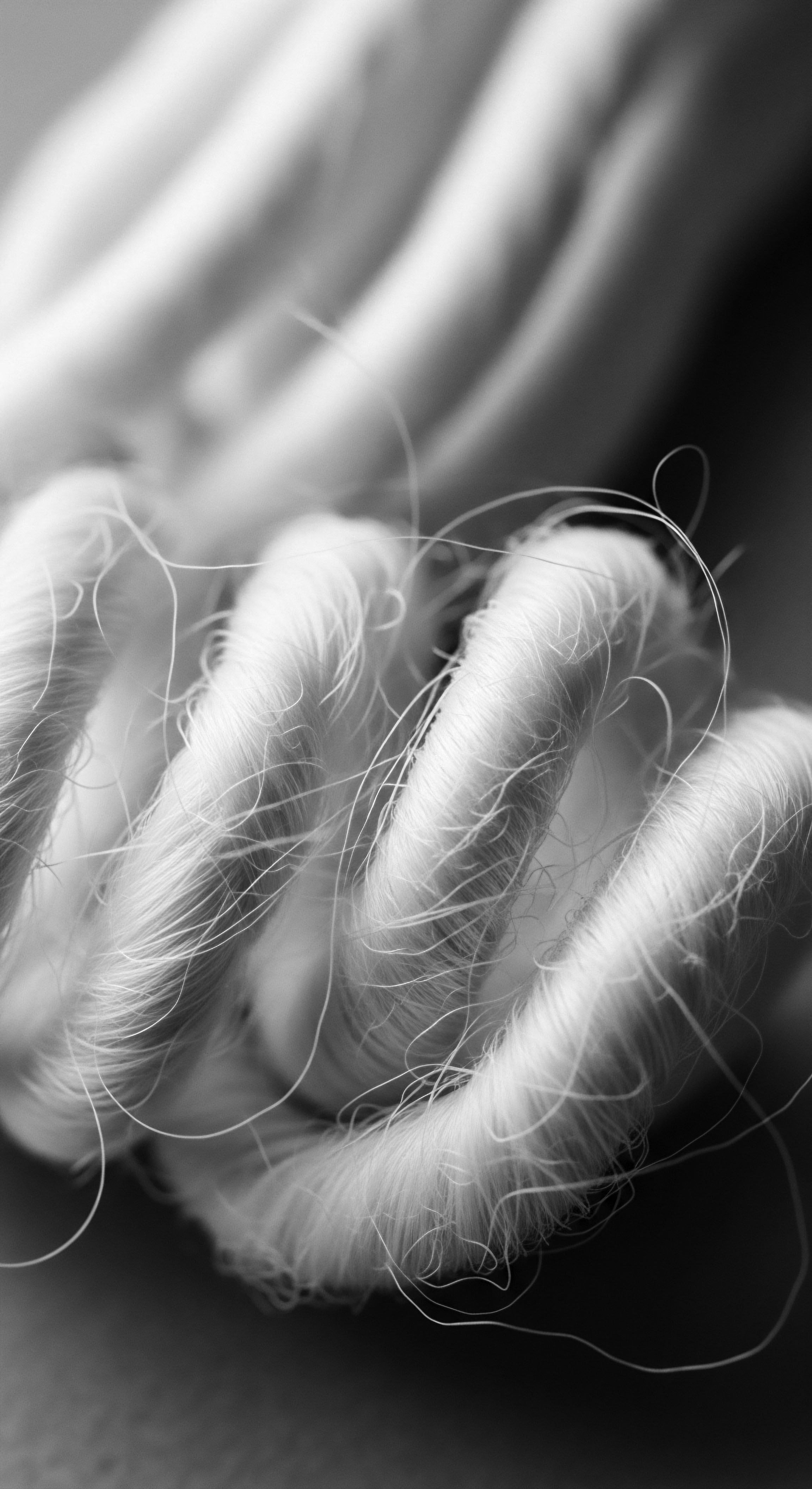
The Sacredness of Strands
Within numerous ancestral traditions, hair was viewed as an extension of the soul, holding spiritual potency and a direct connection to the divine. This spiritual significance meant that hair care rituals were often imbued with deep ceremonial meaning. The process of washing, oiling, and styling hair was not merely about hygiene or aesthetics; it represented a spiritual cleansing, a connection to one’s ancestors, and a reaffirmation of one’s place in the cosmic order.
Specific herbs and oils, often sourced from the immediate environment, were chosen for their perceived energetic properties as much as their physical benefits. These practices illustrate a holistic approach to wellbeing, where the physical body, the spirit, and the community were inextricably linked through the care of hair.
The elemental biology of textured hair, with its diverse curl patterns and coil formations, was recognized and honored in these ancient societies. This intrinsic understanding of hair’s unique structure informed the development of tools and techniques that supported its natural state, ensuring its health and vitality. Combing practices, for instance, employed wide-toothed implements designed to navigate the natural undulations of coily and kinky hair without causing damage, a testament to the intuitive scientific understanding embedded within ancestral wisdom. This recognition of hair’s inherent characteristics formed the bedrock of a hair politics that celebrated difference and inherent beauty.
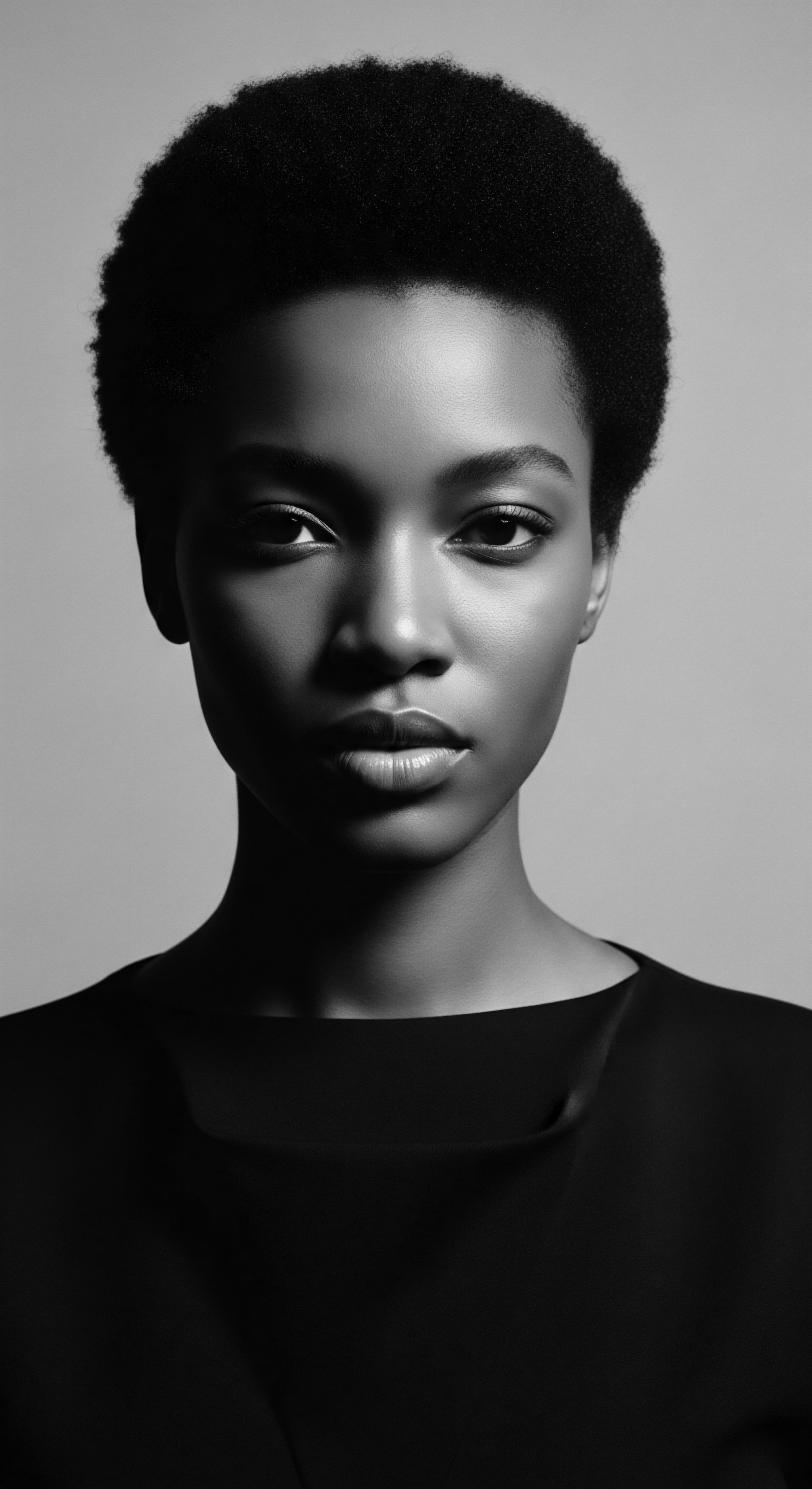
Intermediate
Moving beyond the foundational understanding, the intermediate meaning of Hair Politics for textured hair delves into how these deeply rooted heritage practices have persisted, adapted, and sometimes been challenged across historical epochs. This layer of comprehension focuses on the living traditions of care and community, illustrating how the tender thread of ancestral wisdom has been passed down, often under duress, and transformed to voice identity and shape futures. It explores the practical applications of Hair Politics within traditional and evolving hair care rituals and styling practices for textured hair across the diaspora, emphasizing the enduring continuity and adaptation of heritage knowledge.
The transition from pre-colonial reverence to the complexities introduced by the transatlantic slave trade and subsequent colonial periods marks a critical shift in the lived experience of Hair Politics. Forced migration and the brutal dehumanization of enslaved Africans included deliberate assaults on their hair practices. Hair was often shaved, not only for hygiene on slave ships but as a profound act of cultural erasure, stripping individuals of their identity and connection to their heritage. Yet, even in the face of such profound violence, the spirit of hair care persisted.
Enslaved women, with remarkable resilience, continued to braid hair, often using it as a clandestine means of communication, embedding seeds for survival, or mapping escape routes within intricate cornrow patterns. This act of defiance transformed hair care into a powerful symbol of resistance, a silent declaration of selfhood in an environment designed to deny it.
Hair Politics, through history, reveals how textured hair has served as a resilient canvas for identity, resistance, and the continuity of cultural memory.
The practical application of Hair Politics, therefore, became a complex dance between preserving ancestral techniques and adapting to new realities. The traditional communal grooming practices, while often constrained, found new expressions in shared moments of care, fostering solidarity and maintaining cultural ties. The ingenuity of those who survived led to the creation of new tools and methods, often improvising with available resources, to care for and style textured hair. This period cemented the hair’s role as a potent symbol of resilience and cultural memory.

The Evolution of Care Rituals
The tender thread of care rituals, once openly celebrated, went underground, yet never broke. The meticulous braiding and coiling techniques, once markers of tribal affiliation, became quiet acts of cultural preservation. The wisdom surrounding specific plant-based ingredients for cleansing, moisturizing, and styling textured hair was whispered from elder to youth, adapting to new environments and available botanicals. This adaptation ensured the survival of practices that nurtured both the physical hair and the spirit connected to it.
For instance, the use of natural oils and butters, deeply ingrained in West African traditions for scalp health and hair sheen, continued to be prized. The practice of oiling the scalp and strands, understood as a protective measure against environmental stressors and a means to maintain elasticity, was carried across continents. This knowledge, often dismissed by dominant beauty standards, represents a continuous stream of ancestral wisdom, proving its efficacy through generations of lived experience.
The intermediate meaning also sheds light on the emergence of the Black hair care industry in the late 19th and early 20th centuries. Figures like Annie Turnbo Malone and Madam C.J. Walker, themselves rooted in the lived experiences of Black women, recognized the urgent need for products tailored to textured hair.
Their enterprises were not simply commercial ventures; they were movements of economic empowerment and self-sufficiency within a racially oppressive society. These pioneers created a new context for Hair Politics, where hair care became a vehicle for social advancement and a direct challenge to Eurocentric beauty norms that often denigrated Black hair.
| Historical Period Pre-Colonial Africa |
| Traditional Practice/Innovation Elaborate braiding, use of natural oils and herbs |
| Hair Politics Significance (Heritage Link) Identity marker ❉ Signified status, tribe, age, and spiritual connection, fostering communal bonds. |
| Historical Period Slavery/Colonialism |
| Traditional Practice/Innovation Cornrows as maps/storage, clandestine communal grooming |
| Hair Politics Significance (Heritage Link) Resistance and survival ❉ Secret communication, preservation of cultural memory, defiance against dehumanization. |
| Historical Period Late 19th – Early 20th Century |
| Traditional Practice/Innovation Rise of Black-owned hair care businesses (e.g. Madam C.J. Walker, Annie Malone) |
| Hair Politics Significance (Heritage Link) Economic empowerment ❉ Challenged Eurocentric beauty standards, created self-sufficiency, fostered community activism. |
| Historical Period Mid-20th Century (Civil Rights Era) |
| Traditional Practice/Innovation Emergence of the Afro hairstyle |
| Hair Politics Significance (Heritage Link) Assertion of pride ❉ Symbol of Black Power, rejection of assimilation, celebration of natural texture. |
| Historical Period The journey of textured hair care reflects a continuous adaptation and reinterpretation of ancestral wisdom in response to societal pressures and a persistent dedication to self-definition. |
The establishment of beauty parlors and hair schools by these visionary women provided not only products but also safe spaces for Black women to gather, share, and organize. These establishments became vital public spheres that nurtured debate and activism within Black communities, demonstrating how personal grooming could become a collective act of empowerment. The meaning of Hair Politics thus expanded to encompass the collective agency of a people asserting their beauty standards and economic independence.
This era also saw the complex relationship with hair straightening, a practice that, while often perceived as an attempt to conform to Eurocentric ideals, also presented a pathway to economic opportunity and social mobility for some. The choice of hairstyle became a deeply personal, yet politically charged, decision, reflecting individual aspirations alongside collective struggles. The ongoing interpretation of these historical choices remains a central aspect of Hair Politics today.
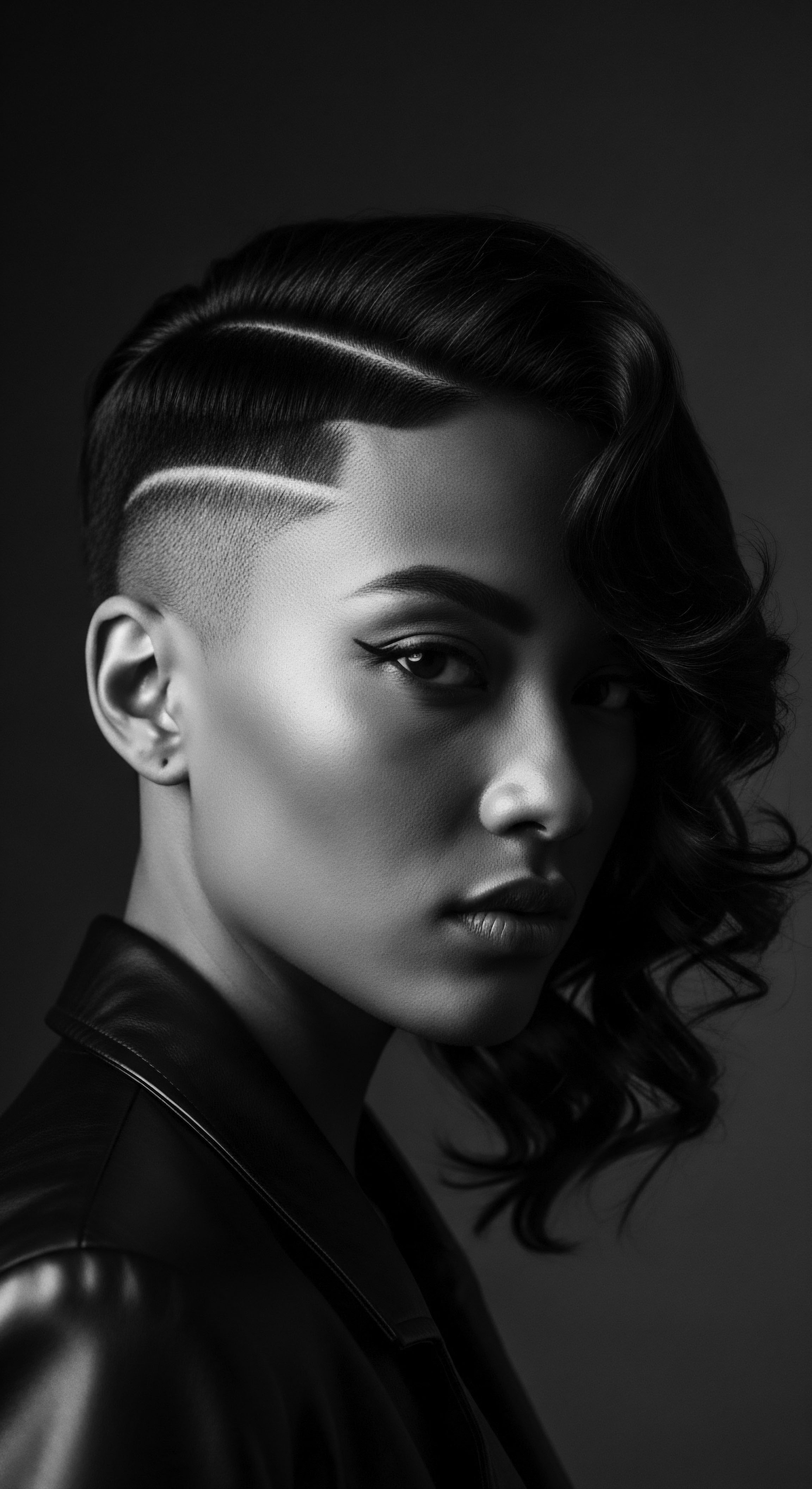
Academic
The advanced understanding of ‘Hair Politics’ transcends simple observation, positioning it as a complex academic construct within the rigorous study of textured hair, Black hair, and mixed-race hair heritage. This comprehensive explication demands a deep dive into its theoretical, anthropological, historical, and scientific underpinnings, drawing upon scholarship that connects past and present to illuminate its ongoing evolution and profound implications. It is here that we discern the intricate interplay of biological, historical, psychological, and social factors that shape textured hair’s heritage and contemporary expression, offering a compound, deeply insightful delineation of its full significance.
From an anthropological perspective, Hair Politics is the study of how hair, particularly textured hair, functions as a dynamic cultural artifact, encoding and transmitting social meaning across generations. It examines the semiotics of hair—how specific styles, textures, and care practices become signifiers of group identity, social hierarchy, resistance, and aspiration within diasporic communities. This scholarly interpretation recognizes that the very act of grooming and styling hair is a performance of identity, a declaration of belonging, or a subtle act of subversion against dominant aesthetic norms. The ancestral practices, initially rooted in communal affirmation, transformed under colonial gaze into sites of contention, yet remained resilient channels for cultural continuity.
Historically, the policing of Black hair, often through legal or social mandates, serves as a compelling case study of Hair Politics in action. A stark illustration can be found in the Tignon Laws of 1786 in Spanish colonial Louisiana. These laws mandated that Creole women of color wear a tignon (headwrap) to cover their hair, ostensibly to denote their lower social status and curb their perceived attractiveness to white men (Byrd & Tharps, 2001). This legal imposition, designed to control and demean, inadvertently sparked a powerful act of aesthetic protest.
Women responded by adorning their headwraps with luxurious fabrics, intricate knots, and vibrant colors, transforming a symbol of subjugation into a declaration of beauty, ingenuity, and cultural pride. This historical example powerfully illuminates how Hair Politics operates as a battleground for identity, where oppressive measures are met with creative resistance, solidifying hair’s role as a site of enduring heritage and self-determination.
The Tignon Laws illustrate Hair Politics as a historical battleground where external control over Black hair was met with powerful, creative acts of self-definition and cultural preservation.
The sociological interpretation of Hair Politics further examines how systemic discrimination, often rooted in historical prejudices, continues to impact individuals with textured hair. Research indicates that hair bias persists in various contexts, including employment and education. For instance, studies reveal that Black women with natural hairstyles are sometimes judged as less professional or competent than those with straightened hair, or even white women, regardless of hair type or style.
This persistent bias underscores the ongoing societal scrutiny of textured hair, forcing individuals to navigate choices that balance personal expression with professional or social acceptance. This dynamic illustrates the long-term consequences of historical Hair Politics, where deeply ingrained biases continue to shape contemporary experiences.
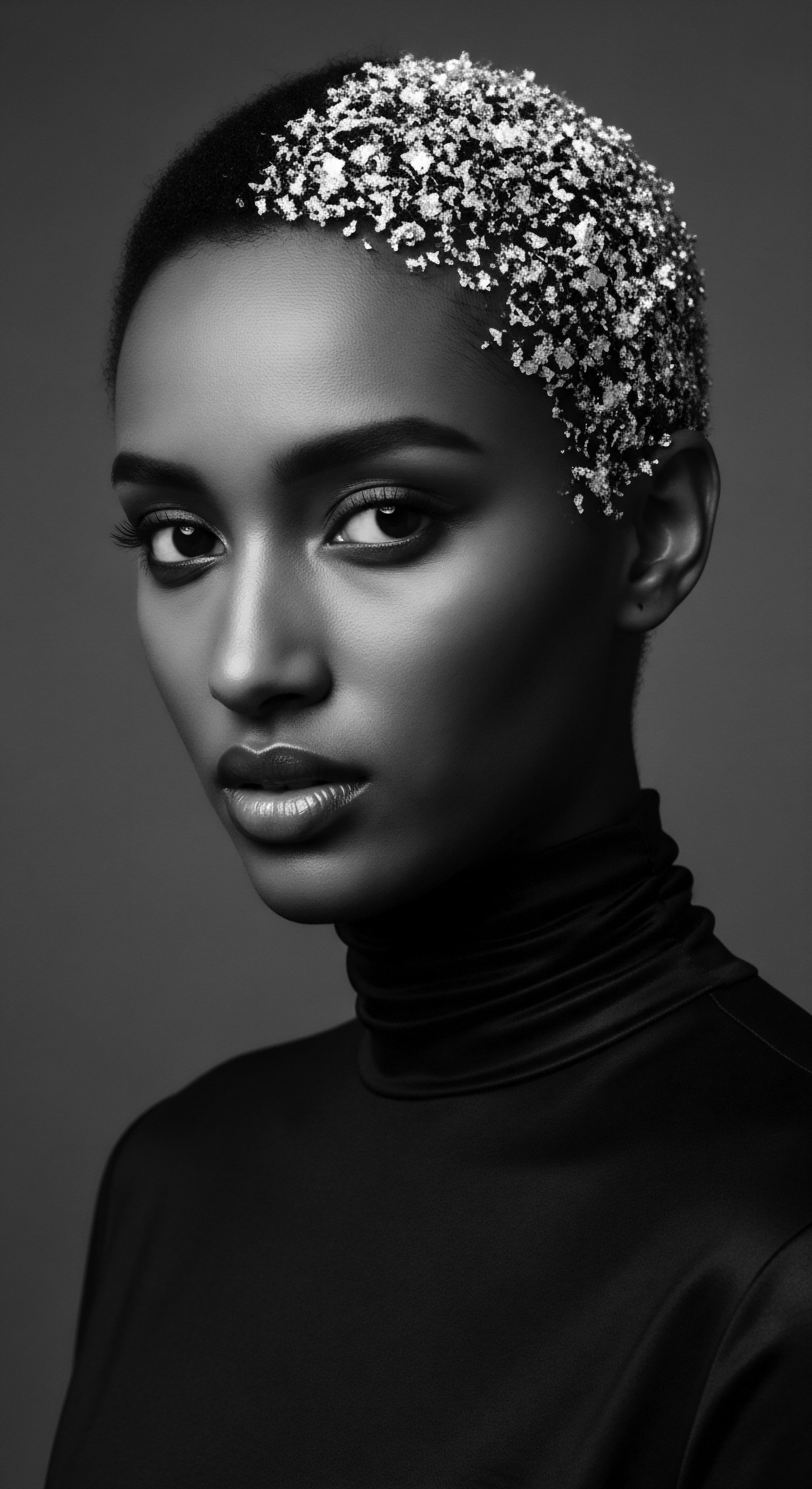
The Biopsychosocial Dimensions
From a scientific perspective, the biological uniqueness of textured hair, with its elliptical follicle shape and varied curl patterns, influences its care requirements and susceptibility to certain conditions. Understanding the biomechanics of coily hair, its protein structure, and moisture retention capabilities provides a scientific basis for traditional care practices that emphasize hydration and protective styling. Modern trichology often validates ancestral wisdom, demonstrating how practices like consistent oiling or braiding align with principles of minimizing breakage and promoting healthy growth. This scientific elucidation of hair’s elemental biology offers a profound clarification of why specific ancestral methods for hair care were, and remain, so effective for textured strands.
The psychological dimension of Hair Politics is equally significant. Hair, as a visible aspect of one’s person, is inextricably linked to self-esteem, body image, and racial identity for Black and mixed-race individuals. The historical devaluation of textured hair in dominant beauty paradigms has contributed to internalized biases, impacting self-perception and mental wellbeing. Conversely, the contemporary natural hair movement represents a powerful reclamation of self, a collective act of healing and affirmation.
Choosing to wear one’s hair in its natural state becomes a declaration of self-acceptance and pride, reflecting a profound shift in the personal and collective understanding of beauty. This personal journey of self-discovery, often grounded in ancestral reconnection, forms a critical part of the modern Hair Politics landscape.
The academic meaning of Hair Politics also involves an examination of its economic implications. The Black hair care industry, historically and presently, represents a significant economic force, often operating independently of mainstream markets. This industry, built by and for Black communities, has provided avenues for entrepreneurship, employment, and wealth creation where other opportunities were denied.
The ongoing evolution of this market, from the era of pressing combs and relaxers to the contemporary surge in natural hair products, mirrors the changing currents of Hair Politics and cultural identity. It demonstrates how economic activity can be a powerful instrument of social and political change, continually shaping the landscape of textured hair heritage.
The academic understanding of Hair Politics, therefore, is a comprehensive statement that synthesizes these diverse fields. It recognizes that hair is not merely a biological attribute but a potent site where history, culture, science, psychology, and economics converge. This scholarly designation allows for a nuanced interpretation of how societal power dynamics have shaped, and continue to shape, the experiences of individuals with textured hair. It compels us to consider how understanding this profound connection to heritage can inform future innovation, policy, and personal empowerment, ultimately fostering a world where every strand is celebrated in its authentic glory.
- Historical Context ❉ Analyzing how historical events, such as colonialism and slavery, imposed new meanings and restrictions upon textured hair, shifting its perception from a symbol of pride to a marker of difference.
- Socio-Cultural Semiotics ❉ Deciphering the symbolic language of hair within various Black and mixed-race communities, recognizing how styles convey messages about identity, resistance, and cultural affiliation.
- Economic Structures ❉ Investigating the development and impact of the Black hair care industry as a unique economic ecosystem, providing self-sufficiency and challenging mainstream beauty markets.
- Psychological Impact ❉ Exploring the effects of societal perceptions on self-esteem and identity formation for individuals with textured hair, and the transformative power of reclaiming natural aesthetics.
- Scientific Validation ❉ Connecting traditional hair care practices to modern scientific understanding of textured hair biology, demonstrating the efficacy and wisdom embedded in ancestral methods.
The full explication of Hair Politics, when viewed through this academic lens, provides maximum insight into the long-term consequences of historical oppression and the enduring strength of cultural resilience. It underscores the vital importance of acknowledging hair not just as a personal adornment, but as a living testament to a rich and complex heritage, continually influencing personal and collective narratives.
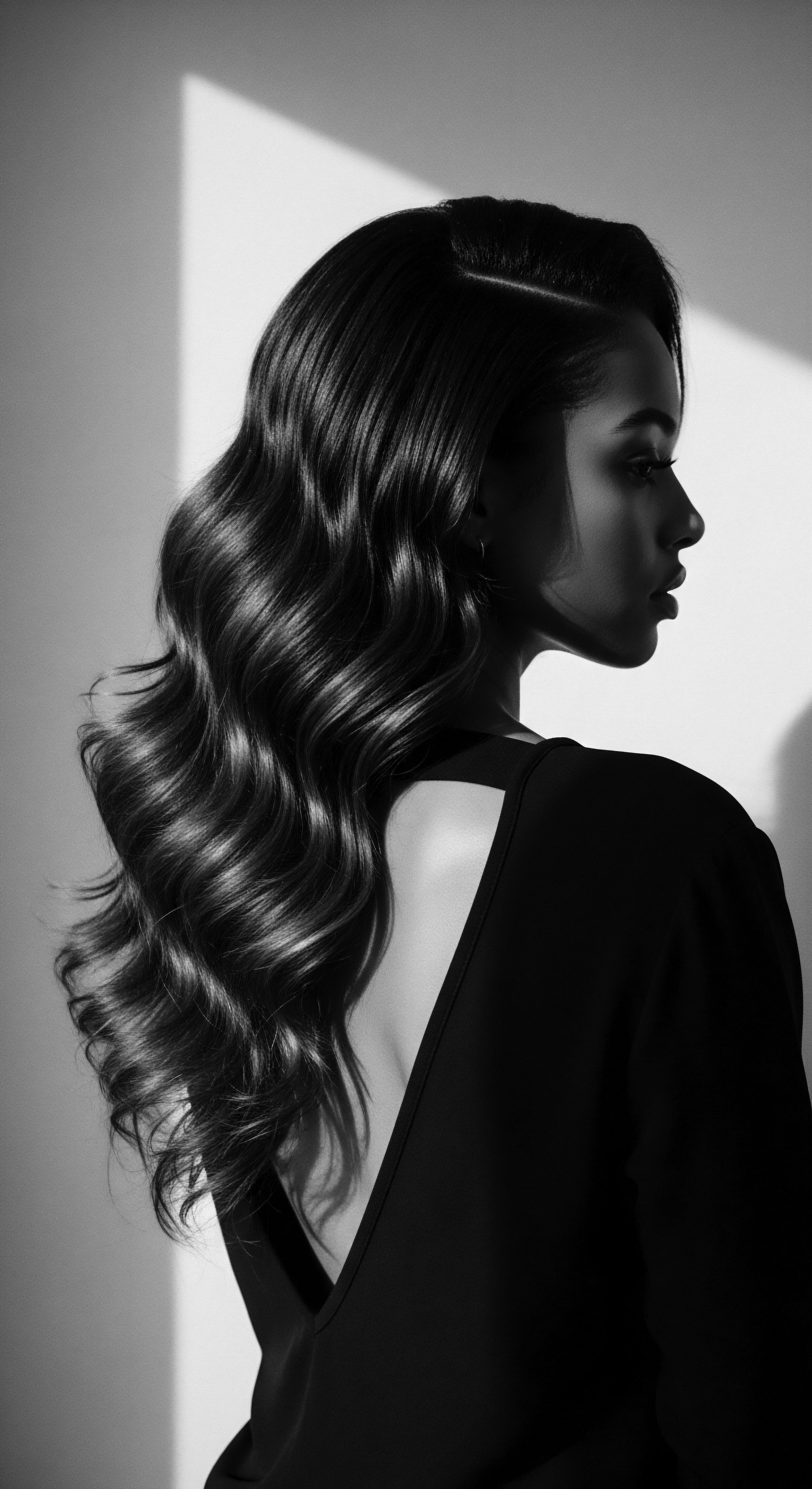
Reflection on the Heritage of Hair Politics
As we draw our exploration of Hair Politics to a close, we find ourselves contemplating the profound and enduring legacy of textured hair within the vibrant tapestry of human experience. The journey from the elemental biology of the strand, through the ancient practices that honored its sacredness, to the living traditions of care and community that weathered centuries of challenge, culminates in the unbound helix of identity and future-shaping potential. Roothea’s vision, centered on the Soul of a Strand ethos, recognizes that hair is a continuous conversation between past and present, a living testament to resilience, creativity, and self-determination.
The heritage of Hair Politics is not merely a historical footnote; it is a dynamic, breathing force that continues to inform and inspire. Each curl, coil, and wave carries the echoes of ancestral wisdom, the tender touch of communal care, and the defiant spirit of those who asserted their identity against overwhelming odds. The choices we make today about our hair, whether in personal styling, product selection, or advocacy for acceptance, are deeply connected to this rich lineage. We honor the ingenuity of those who transformed headwraps into crowns of protest and built empires from the ground up, all while nurturing the unique beauty of textured hair.
The continuous dialogue between traditional knowledge and modern scientific understanding further enriches this heritage. What was once intuitive wisdom about plant properties or styling techniques now finds validation in trichological research, reaffirming the profound efficacy of ancestral practices. This synergy allows us to appreciate the depth of knowledge passed down through generations, encouraging a mindful approach to hair care that respects both ancient roots and contemporary advancements. The journey of Hair Politics compels us to recognize hair as a site of ongoing cultural production, a canvas upon which identity is perpetually re-imagined and celebrated.
Ultimately, reflecting on the heritage of Hair Politics means acknowledging the hair as a potent symbol of belonging, a source of personal and collective strength. It reminds us that caring for textured hair is not just a routine; it is an act of reverence, a connection to a lineage of wisdom, and a powerful declaration of self-love. Through this lens, every strand tells a story, a vibrant narrative of enduring beauty, cultural pride, and an unbreakable spirit that continues to shape the future of textured hair for generations to come.
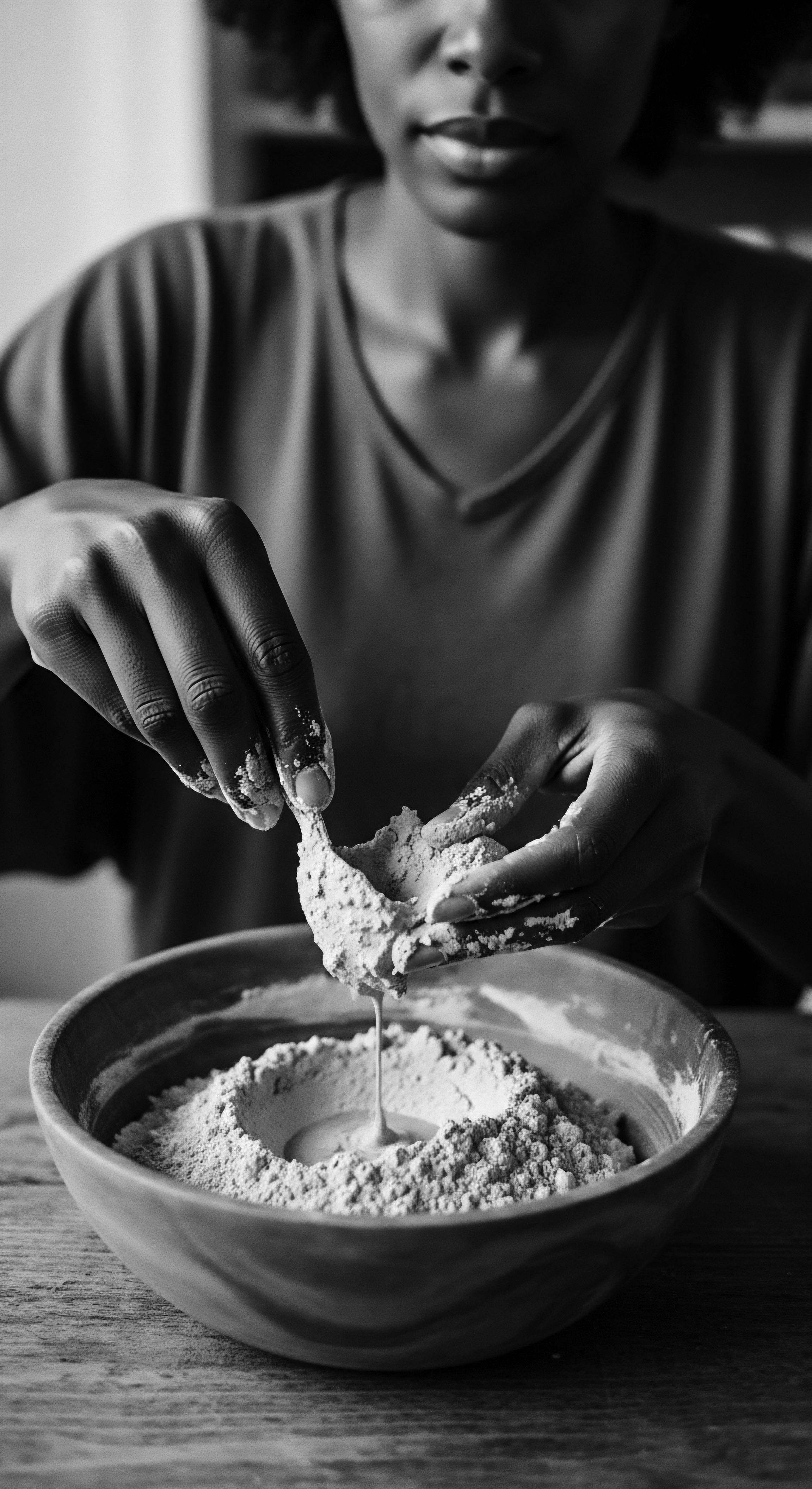
References
- Byrd, A. D. & Tharps, L. L. (2001). Hair Story ❉ Untangling the Roots of Black Hair in America. St. Martin’s Press.
- Kein, S. (Ed.). (2000). Creole ❉ The History and Legacy of Louisiana’s Free People of Color. Louisiana State University Press.
- Johnson, T. & Bankhead, T. (2014). Hair It Is ❉ Examining the Experiences of Black Women with Natural Hair. Open Journal of Social Sciences, 2, 86-100.
- Mouchane, M. Taybi, H. Gouitaa, N. & Assem, N. (2023). Ethnobotanical Survey of Medicinal Plants used in the Treatment and Care of Hair in Karia ba Mohamed (Northern Morocco). Journal of Medicinal Plants and By-Products, 13 (1), 201-208.
- Rooks, N. M. (1996). Hair Raising ❉ Beauty, Culture, and African American Women. Rutgers University Press.
- Thompson, C. (2009). Black Women and Beauty Culture in 20th-Century America. Oxford Research Encyclopedia of American History .
- Weitz, R. (2000). Rapunzel’s Daughters ❉ What Women’s Hair Tells Us About Women’s Lives. Farrar, Straus and Giroux.
- Zaid, A. N. Jaradat, N. A. Eid, A. M. Al Zabadi, H. Alkaiyat, A. & Darwish, S. A. (2017). Ethnopharmacological survey of home remedies used for treatment of hair and scalp and their methods of preparation in the West Bank-Palestine. BMC Complementary and Alternative Medicine, 17 (1), 1-15.
- Jacobs-Huey, L. (2006). From the Kitchen to the Salon ❉ Language and Cultural Co-Construction in the African American Beauty Shop. Oxford University Press.
- Henderson, A. (2015). Redefining the Identity of Black Women ❉ “Natural” Hair and the Natural Hair Movement. The George Washington University.
